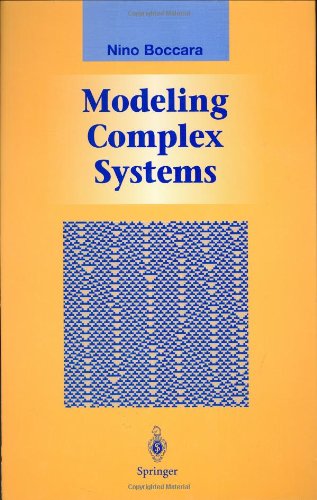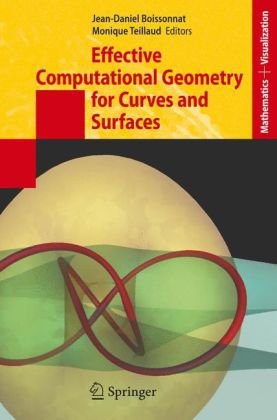Nino Boccara0387404627, 9780387404622, 9780387216461
Table of contents :
Modeling Complex Systems……Page 1
Preface……Page 8
Contents……Page 10
1.1 What is a complex system?……Page 14
1.2 What is a model?……Page 17
1.3 What is a dynamical system?……Page 22
2.1 Lotka-Volterra model……Page 30
2.2 More realistic predator-prey models……Page 37
2.3 A model with a stable limit cycle……Page 38
2.4 Fluctuating environments……Page 40
2.5 Hutchinson’s time-delay model……Page 41
2.6 Discrete-time models……Page 44
2.7 Lattice models……Page 46
Part I Mean-Field Type Models……Page 52
3.1 Flows……Page 54
3.2.1 Linear systems……Page 64
3.2.2 Nonlinear systems……Page 69
3.3 Graphical study of two-dimensional systems……Page 79
3.4 Structural stability……Page 82
3.5 Local bifurcations of vector fields……Page 84
3.5.1 One-dimensional vector fields……Page 86
3.5.2 Equivalent families of vector fields……Page 95
3.5.3 Hopf bifurcation……Page 96
3.5.4 Catastrophes……Page 98
3.6.1 Random walk and diffusion……Page 104
3.6.2 One-population dynamics with dispersal……Page 105
3.6.3 Critical patch size……Page 107
3.6.4 Diffusion-induced instability……Page 108
Exercises……Page 111
Solutions……Page 113
4.1 Iteration of maps……Page 120
4.2 Stability……Page 123
4.3 Poincar′e maps……Page 131
4.4.1 Maps on R……Page 133
4.4.2 The Hopf bifurcation……Page 138
4.5 Sequences of period-doubling bifurcations……Page 140
4.5.1 Logistic model……Page 141
4.5.2 Universality……Page 144
Exercises……Page 149
Solutions……Page 152
5 Chaos……Page 158
5.1 Defining chaos……Page 160
5.1.1 Dynamics of the logistic map f4……Page 162
5.1.2 Definition of chaos……Page 166
5.2 Routes to chaos……Page 167
5.3.1 Stochastic properties……Page 169
5.3.2 Lyapunov exponent……Page 171
5.3.3 “Period three implies chaos”……Page 172
5.3.4 Strange attractors……Page 174
5.4.2 The H′enon map……Page 182
5.5.1 The Lorenz model……Page 187
Exercises……Page 189
Solutions……Page 190
Part II Agent-Based Models……Page 203
6.1 Cellular automaton rules……Page 204
6.2 Number-conserving cellular automata……Page 207
6.3 Approximate methods……Page 220
6.4 Generalized cellular automata……Page 226
6.5 Kinetic growth phenomena……Page 234
6.6 Site-exchange cellular automata……Page 241
6.7 Artificial societies……Page 256
Exercises……Page 271
Solutions……Page 275
7.1 The small-world phenomenon……Page 288
7.2 Graphs……Page 289
7.3 Random networks……Page 292
7.4.1 Watts-Strogatz model……Page 296
7.4.2 Newman-Watts model……Page 299
7.4.3 Highly connected extra vertex model……Page 300
7.5.1 Empirical results……Page 301
7.5.2 A few models……Page 305
Exercises……Page 312
Solutions……Page 314
8.1 Classical examples……Page 324
8.2.1 Basic definitions……Page 330
8.2.2 Central limit theorem……Page 333
8.2.3 Lognormal distribution……Page 337
8.2.4 L′evy distributions……Page 338
8.2.5 Truncated L′evy distributions……Page 341
8.2.6 Student’s t-distribution……Page 343
8.2.7 A word about statistics……Page 344
8.3 Empirical results and tentative models……Page 347
8.3.1 Financial markets……Page 348
8.3.2 Demographic and area distribution……Page 352
8.3.4 Distribution of votes……Page 353
8.4.1 The sandpile model……Page 354
8.4.2 Drossel-Schwabl forest fire model……Page 356
8.4.3 Punctuated equilibria and Darwinian evolution……Page 358
8.4.4 Real life phenomena……Page 360
Exercises……Page 365
Solutions……Page 367
Notations……Page 380
References……Page 384
Index……Page 402






Reviews
There are no reviews yet.